#TakeCharge with #Aimshala
How make a career in Software Engineer (Full Stack)
A career as a Full Stack Software Engineer in the textiles industry offers a unique opportunity to integrate technology with textile design and manufacturing processes. Individuals aspiring to enter this field typically need a strong academic background in computer science, software engineering, or a related discipline. A bachelor's degree is essential, often followed by specialization in web development, mobile app development, or data science. Practical experience through internships, coding bootcamps, or personal projects significantly enhances employability. Networking with industry professionals and staying updated with the latest technologies and trends in software development and textiles are also crucial. With a combination of education, experience, and a passion for technology, one can build a rewarding career dedicated to advancing the textiles industry through innovative software solutions.
Career in Software Engineer (Full Stack)
What are the roles and responsibilities in Software Engineer (Full Stack)?
- Developing Web Applications : Full Stack Software Engineers design and build user-friendly web applications that meet client requirements and enhance user experience.
- Database Management : They manage and maintain databases, ensuring data integrity and optimizing performance for applications.
- Collaborating with Teams : Full Stack Engineers work closely with designers, product managers, and other developers to create cohesive and efficient software solutions.
- Testing and Debugging : They conduct thorough testing and debugging of applications to ensure functionality, security, and performance.
- Continuous Learning : Full Stack Software Engineers stay updated with emerging technologies and industry trends to enhance their skills and improve their work.
What education is required to study Software Engineer (Full Stack)
Check out the dates of the total number of candidates who have appeared in the CUET 2022 exam from the below table.
Stream |
Graduation |
After Graduation |
After Post Graduation |
|
|
Path 1 |
Completion of high school with a focus on mathematics and computer science. |
Bachelor of Science in Computer Science, Software Engineering, or a related field. |
Master's degree in Software Engineering or specialized fields such as Data Science or Cybersecurity. |
Certifications in relevant technologies (e.g., AWS, Microsoft Azure) for those pursuing advanced roles. |
|
Path 2 |
Completion of high school with emphasis on computer programming or vocational training in IT. |
Bachelor's degree in Information Technology or Web Development. |
Master's degree in Information Technology or related fields. |
Certifications in specific programming languages or frameworks (e.g., React, Angular). |

Feeling unsure about
your future?
Let's find the perfect career path for you!
with AI-powered career
guidance

What are the key skills required for Software Engineer (Full Stack)
- Programming Skills - Proficiency in multiple programming languages (JavaScript, Python, etc.) is essential for developing full-stack applications.
- Problem-Solving Skills - The ability to troubleshoot issues and develop effective solutions is crucial for software development.
- Team Collaboration - Strong collaboration skills are vital for working effectively within cross-functional teams on software projects.
- Adaptability - The tech landscape is constantly evolving; being adaptable to new tools and technologies is key to success.
- Attention to Detail - A keen eye for detail is important for ensuring code quality and application performance.
What are the career opportunities in Software Engineer (Full Stack)?
- Front-End Developer - Front-End Developers focus on the visual aspects of applications, ensuring a seamless user experience.
- Back-End Developer - Back-End Developers concentrate on server-side logic, database interactions, and application performance.
- DevOps Engineer - DevOps Engineers bridge the gap between development and operations, enhancing deployment processes and system reliability.
- Software Architect - Software Architects design the overall structure of software systems, ensuring scalability and maintainability.
- Technical Project Manager - Technical Project Managers oversee software development projects, ensuring timely delivery and alignment with business goals.
What is the salary and demand for Software Engineer (Full Stack)?
- Salary Overview - The typical salary for Full Stack Software Engineers ranges from $70,000 for entry-level positions to over $120,000 for experienced professionals, with variations based on education and location.
- Regional Salary Variations - Salaries can vary significantly by region; for example, Full Stack Engineers in tech hubs may earn more than those in less populated areas.
- Current Job Market Demand - The demand for Full Stack Software Engineers is growing due to the increasing reliance on technology across all sectors, including textiles.
- Future Demand Projections - Future demand for Full Stack Software Engineers is expected to rise as businesses continue to digitize operations and develop innovative software solutions.
Leading companies for careers in Software Engineer (Full Stack)

Tata Consultancy Services

Infosys

Wipro

Accenture

Cognizant

HCL Technologies

Capgemini

Tech Mahindra
What are the best colleges for Software Engineer (Full Stack) in India?
Undergraduate
College |
Location |
Website |
|
Indian Institute of Technology, Delhi |
New Delhi |
https://www.iitd.ac.in |
|
National Institute of Technology, Tiruchirappalli |
Tiruchirappalli |
https://www.nitt.edu |
|
Birla Institute of Technology and Science, Pilani |
Pilani |
https://www.bits-pilani.ac.in |
|
Indian Institute of Information Technology, Bangalore |
Bangalore |
https://www.iiitb.ac.in |
|
Vellore Institute of Technology |
Vellore |
https://www.vit.ac.in |
Postgraduate
College |
Location |
Website |
|
Indian Institute of Technology, Bombay |
Mumbai |
https://www.iitb.ac.in |
|
Indian Institute of Management, Bangalore |
Bangalore |
https://www.iimb.ac.in |
|
Indian Institute of Science |
Bangalore |
https://www.iisc.ac.in |
|
National Institute of Technology, Warangal |
Warangal |
https://www.nitw.ac.in |
|
Indian School of Business |
Hyderabad |
https://www.isb.edu |
What are the best colleges for Software Engineer (Full Stack) in Abroad?
College |
Location |
Website |
|
Massachusetts Institute of Technology |
Cambridge, Massachusetts, USA |
https://www.mit.edu |
|
Stanford University |
Stanford, California, USA |
https://www.stanford.edu |
|
Carnegie Mellon University |
Pittsburgh, Pennsylvania, USA |
https://www.cmu.edu |
|
University of Oxford |
Oxford, United Kingdom |
https://www.ox.ac.uk |
|
ETH Zurich |
Zurich, Switzerland |
https://www.ethz.ch |
What are the top entrance exams in India for pursuing a career in Software Engineer (Full Stack)
College |
Tentative Date |
UG/PG |
Important Elements |
Website |
|
Indian Institute of Technology, Delhi |
April |
Undergraduate |
Mathematics, Physics, and Chemistry. |
https://www.iitd.ac.in |
|
National Institute of Technology, Tiruchirappalli |
May |
Undergraduate |
Mathematics, Physics, and Chemistry. |
https://www.nitt.edu |
|
Birla Institute of Technology and Science, Pilani |
June |
Undergraduate |
Mathematics, Physics, and Chemistry. |
https://www.bits-pilani.ac.in |
|
Indian Institute of Science |
July |
Postgraduate |
Engineering Mathematics, Data Structures, and Algorithms. |
https://www.iisc.ac.in |
|
Massachusetts Institute of Technology |
January |
Postgraduate |
Mathematics, Physics, and Analytical Skills. |
https://www.mit.edu |
Pros & Cons of a Career in Software Engineer (Full Stack)
Pros
- Full Stack Software Engineers play a vital role in shaping the digital landscape, making their work impactful and rewarding.
- The field offers competitive salaries, especially for those with advanced skills and experience.
- Professionals in this field have the opportunity to work on diverse projects, from e-commerce platforms to textile management systems.
- The career provides ample opportunities for continuous learning and professional growth in a rapidly evolving industry.
Cons
- The job can be demanding with long hours, especially when deadlines approach or during major project rollouts.
- Some roles may require extensive collaboration across time zones, leading to irregular working hours.
- Rapid technological changes can necessitate continuous learning, which can be overwhelming for some.
- The work can sometimes be isolating, especially for remote positions where team interaction is limited.
Did you find this information helpful?


Report
0 out of 0 found this helpful


